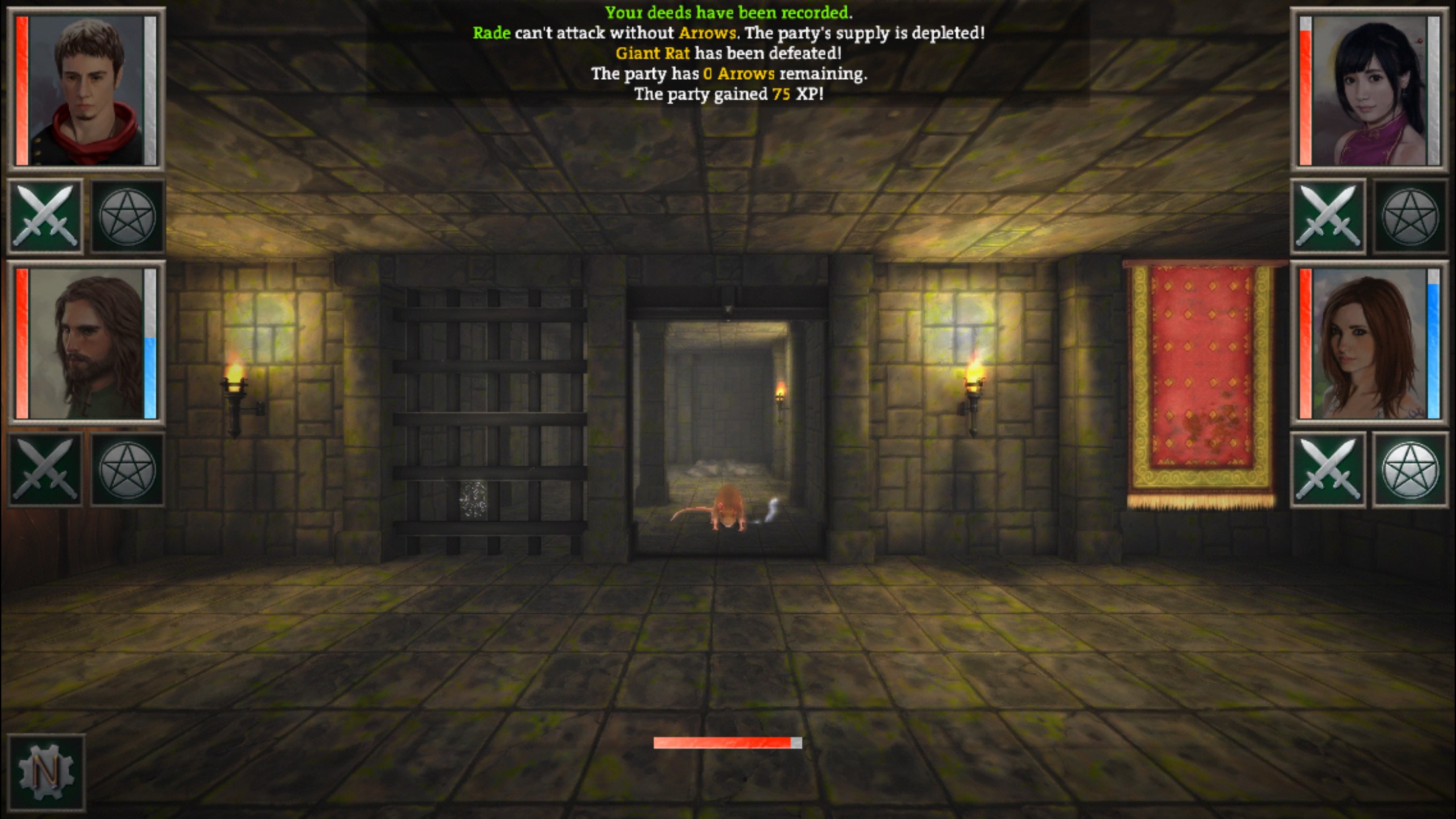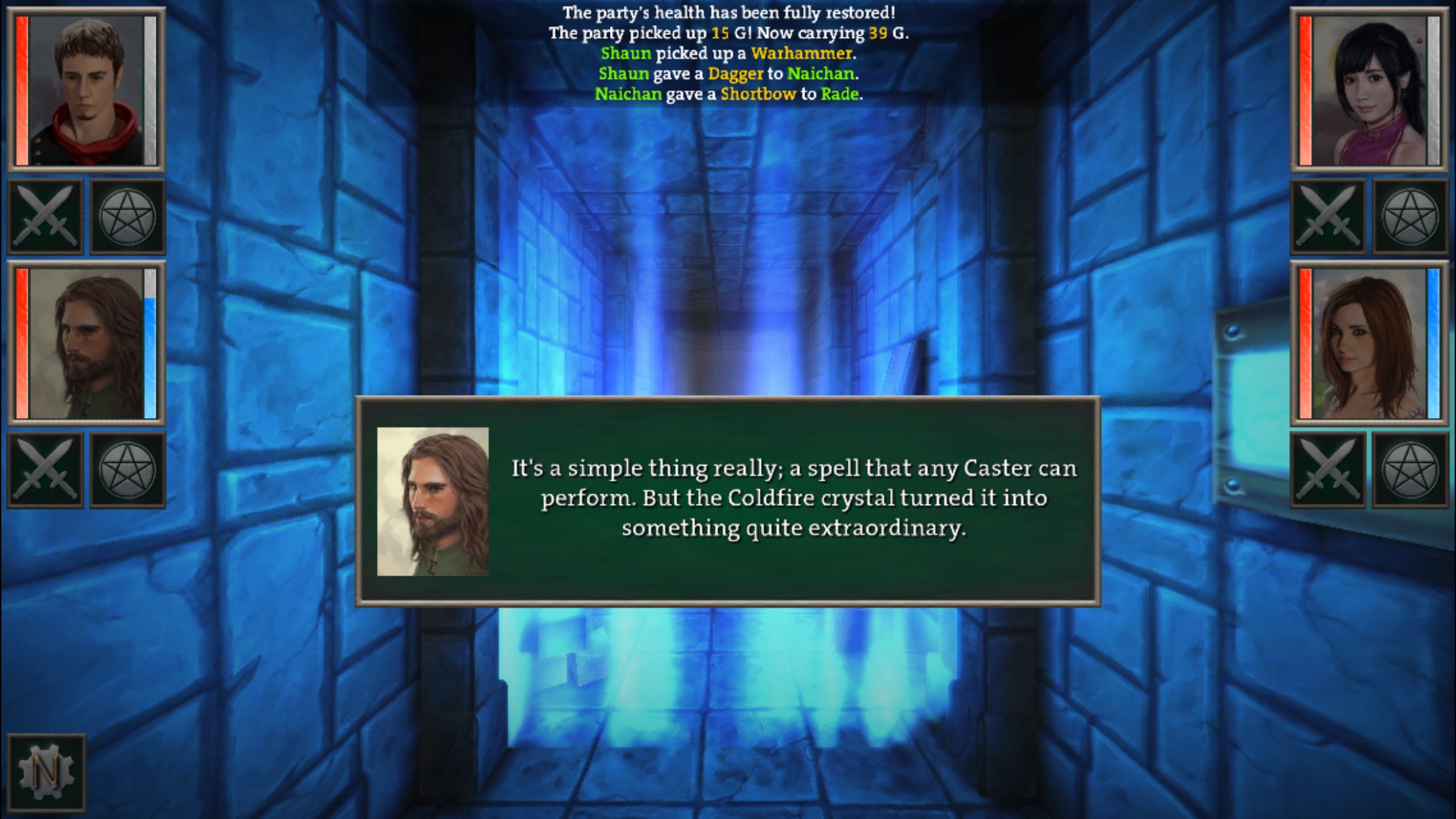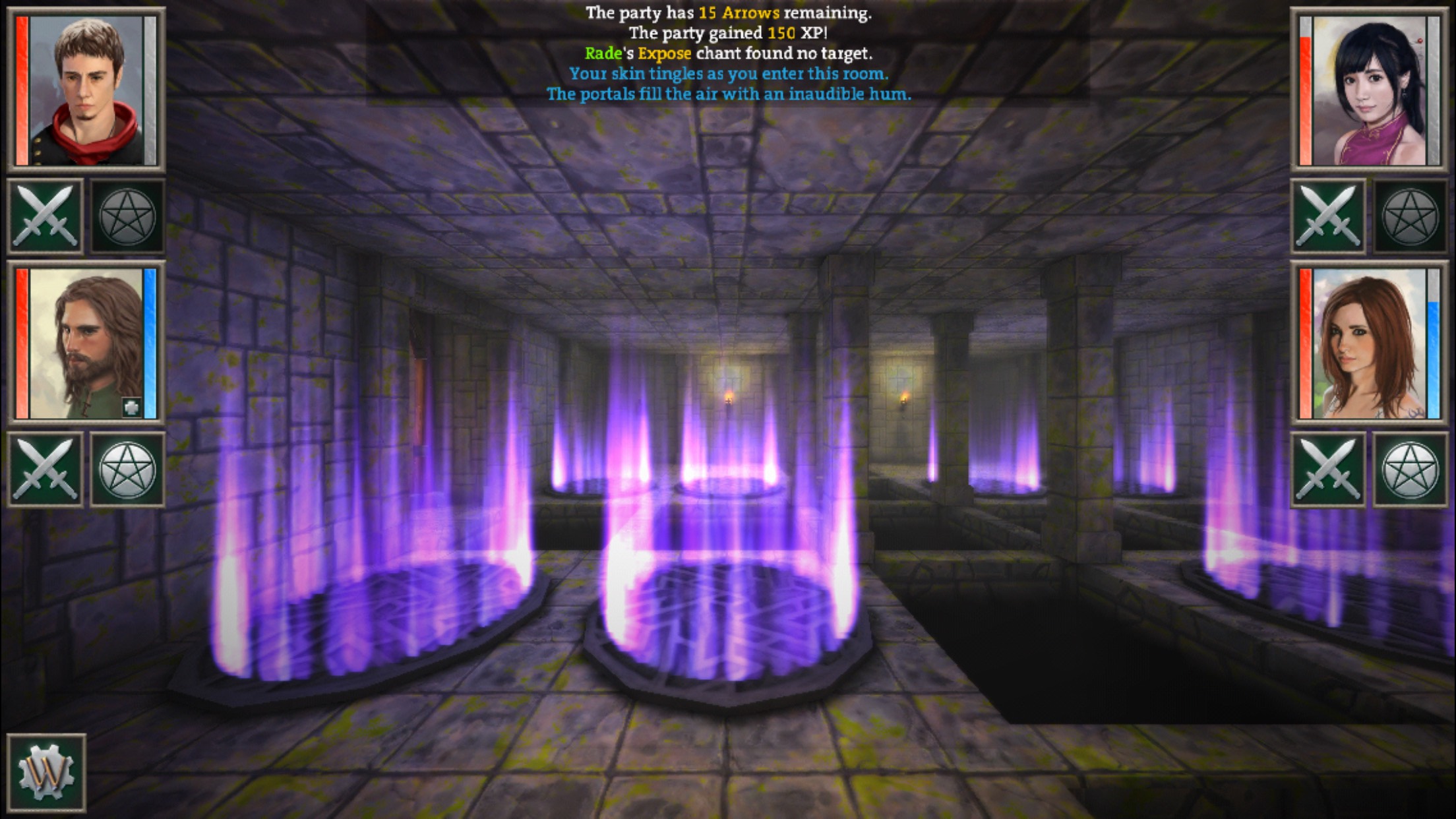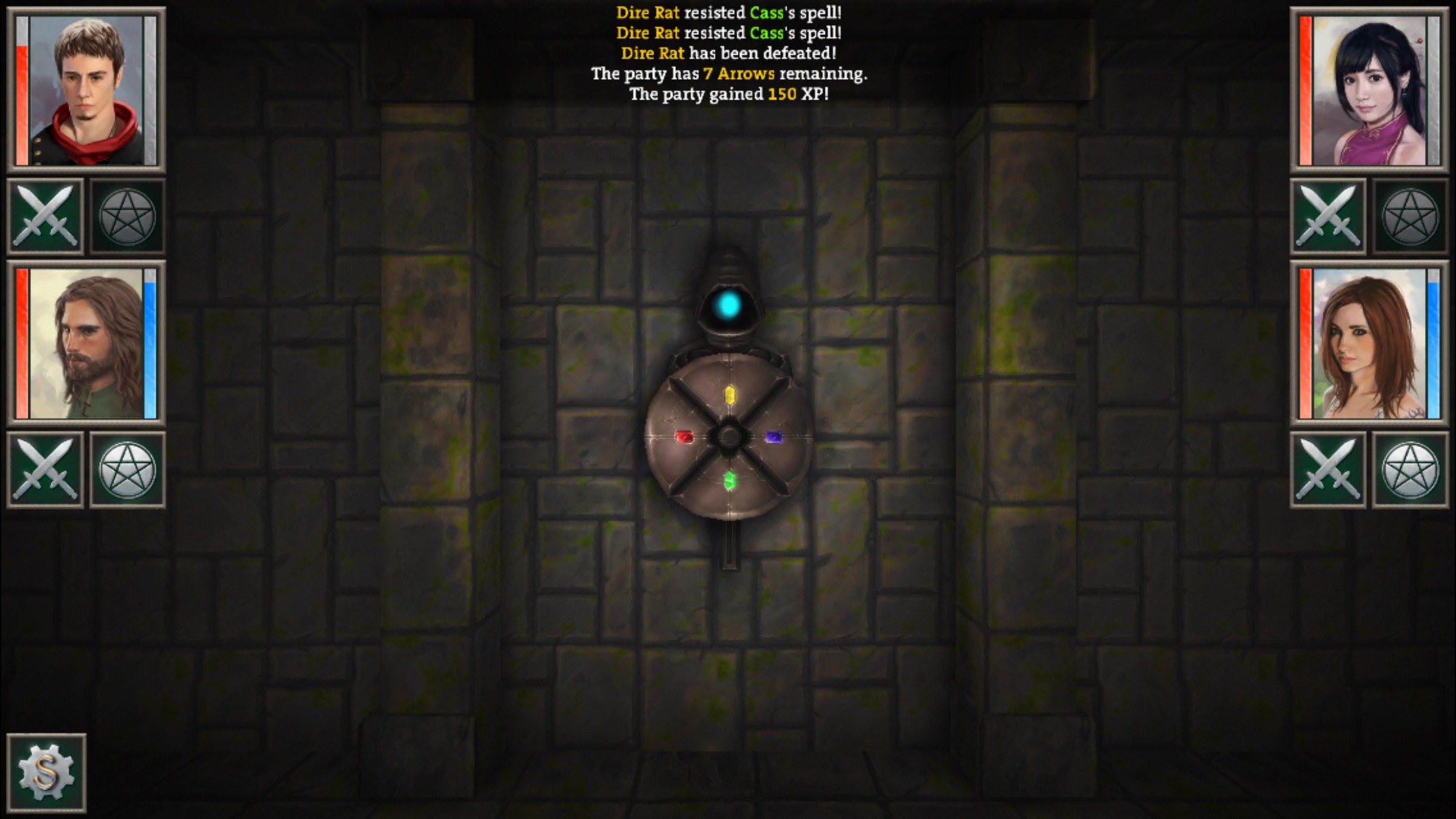 Hello, gentle readers, and welcome to the RPG Reload, the weekly feature where our fish are abnormally crunchy at all times. Each week, we take a look at an RPG from the App Store’s past to see how it holds up in the here and now. It’s a bit of revisiting, a dash of reflecting, and a giant splash of taking a deeper dive than our reviews typically allow for. I don’t know, it felt like a thing to write at the time. Anyway, I try to choose a good variety of games from week to week, but if you feel like I’ve missed something, feel free to give me suggestions by posting in the comments below, stopping by the RPG Reload Club thread, or by tweeting me at @RPGReload. Since the schedule is currently planned through August, you might not see your suggestion for a while, but I will add it to the master list.
Hello, gentle readers, and welcome to the RPG Reload, the weekly feature where our fish are abnormally crunchy at all times. Each week, we take a look at an RPG from the App Store’s past to see how it holds up in the here and now. It’s a bit of revisiting, a dash of reflecting, and a giant splash of taking a deeper dive than our reviews typically allow for. I don’t know, it felt like a thing to write at the time. Anyway, I try to choose a good variety of games from week to week, but if you feel like I’ve missed something, feel free to give me suggestions by posting in the comments below, stopping by the RPG Reload Club thread, or by tweeting me at @RPGReload. Since the schedule is currently planned through August, you might not see your suggestion for a while, but I will add it to the master list.
This time around, we’re going to be looking at Coldfire Keep ($4.99) from developer Steve Jarman and publisher Crescent Moon. It’s a semi-real time, party-based, first-person dungeon crawler in the vein of home computer classics like Dungeon Master and Eye Of The Beholder, a strain of RPG most famously represented today by The Legend Of Grimrock ($4.99). This was Jarman’s second crack at this style of game, with the first being the relatively warmly-received Descend RPG ($1.99), and it’s a genre he’ll be returning to with the upcoming The Deep Paths: Labyrinth Of Andokost. Dungeon Master-inspired games were a dime a dozen at one point in the 1990s, and although there can certainly be too much of a good thing, I kind of miss those days when you could pull a decent Dungeon Master-style game you’d never heard of out of the software bin at the local computer shop. Coldfire Keep feels like something you’d have pulled out of those mysterious bins of wonder.

Steve Jarman isn’t shy about professing his love for Dungeon Master, and it’s a passion that shines through in both Descend and Coldfire Keep. I feel like Dungeon Master had somehow fallen out of the greater gaming consciousness for a while there until Grimrock made its big splash, an odd fate for such a popular game. Initially released in 1987 on the Atari ST computer platform, it was a massive success for publisher FTL Games, and soon made its way to a variety of other computers and consoles. While in screenshots it looked a lot like Wizardry, old hat by anyone’s measure at that point, the game added a few interesting real-time elements to its largely turn-based structure. Aside from that, it was just a very well-designed dungeon crawler, with enjoyable puzzles to solve and a long, challenging quest. FTL closed shop in the mid-90s, and while its owner apparently still has the rights to the Dungeon Master games, he’s shown no public interest in bringing them to platforms like Steam, GOG, or iOS.
It’s probably that combination of devotion on the part of fans and the game’s lack of availability that has resulted in so many kicks at the proverbial can in the last several years. Even sticking to iOS alone, there are several games of varying quality that were clearly inspired by Dungeon Master, and a couple that appear to be downright copying it. Jarman’s first attempt at paying homage to one of his favorite games was pretty good, but as we’ll certainly be featuring Descend in an RPG Reload of its own one day, we’ll move on to the second and most recent game in the line, Coldfire Keep.

In Coldfire Keep, you guide a team of four adventurers into the titular dungeon to investigate a recent disturbance. You can choose which classes are in your party from the usual assortment, select their genders and portraits, and allocate some initial points into their stats. Before entering the keep, you’ll be introduced to the two main NPCs in the game who run the inn and the shop. They’ll explain the way things work, and if you have enough money, you can buy one of a few different items from the shopkeeper. After that, the route into the keep will be opened and you can begin your plunge down its 17 floors.
The game sticks fairly close to Dungeon Master‘s broad strokes. Movement through the dungeon happens a step at a time, with each step counting as a turn. Turns also pass while you’re standing still, which is most important to remember when there are enemies about. In battle, the turns work like brief periods of cooldown between attacks. Tap a character’s weapon icon to spend their turn attacking with whatever you’ve equipped them with, or tap their magic icon to use a spell. Most weapons require you to be in an adjacent square to the enemy, but magic and a couple of the weapons allow you to attack from a distance. The enemies, on the other hand, almost entirely depend on using melee attacks. It’s honestly pretty easy to abuse that fact by rolling a party of mages, since spells do decent damage and MP regenerates over time. Combat tends to lack impact and rarely requires much strategy on your part, but that’s frequently the case with Dungeon Master-inspired games, I find. Coldfire Keep also uses a more traditional leveling system than Dungeon Master, with your characters collecting experience points for beating enemies or solving puzzles. When they get enough points, they level up, allowing you to assign another point to a stat of your choice.

As usual for this type of game, the meat is in navigating the labyrinth of Coldfire Keep and solving its many puzzles. The developer did a great job of capturing the feel of RPGs from the late 1980s and early 1990s, though some might say he did it too well. You’ll likely make slow but steady progress through the first several floors, but eventually missed secrets and unsolved mysteries might pile up, and unless you knuckle down and start figuring everything out, you won’t get much farther. The puzzles are a mix of the familiar, such as using arrows to activate targets, and the new, like the color-coded doors and their associated switches. At a basic level, what you’re looking for are keys, however. Your progress is usually blocked by locked doors, and you’ll need to find the right kind of key to move on. The nice thing about this kind of design is that you know that the item you need is around somewhere, so it’s just a matter of finding it. That process sometimes involves a frustrating level of thoroughness, but hey, I doubt you came to an old-school dungeon crawler for a luau.
The design of the dungeon itself is probably the strongest point of Coldfire Keep. It’s not quite as exciting in other respects. The UI and controls are satisfactory but not stellar, with movement in particular feeling slower than it ideally should. Some buttons are too small on devices with smaller screens, and there are a few instances where it feels like you’re pixel-hunting. The game includes a hunger gauge for your party members, which is an interesting idea, but in practice, it isn’t much more than an unnecessary time sink. You have to eat every now and then because if your hunger gauge bottoms out, you’ll start taking regular damage until you die. You can buy rations at the shop, but the best way to stay fed is to buy the fishing tackle and head to the nearest watering hole.

Fishing in Coldfire Keep simply requires you to tap on the spot. You might catch a fish, a treasure, or nothing at all. Once you’ve gotten your result, you can fish again, as many times as you like. It makes time and turns pass, but there’s no other consequence for fishing to your heart’s content. So the wisest course of action is to stop and fish until everyone’s bags are full whenever you come across a watering hole. You’ll never have to worry about food, but it’s not much fun, either. Besides the hunger meter and fishing, there are other elements that seem like they weren’t fully thought out. For example, traps can be found on chests, switches, or other objects, but the only way to detect and disarm them is to try to use the object. If your rogue succeeds, you’ll use the object without a problem, but if they fail, you’ll suffer the consequence. Having some sign that an object is trapped before you touch it would be good. Trying to open a chest shows another peculiarity. If you fail to open it, you can try again, but you have to wait a set number of turns. If there were more enemies about, this might be a good punishment, but most of the time, it just means hanging around in an empty room for a bit and hoping you’ll get it on the next go.
Coldfire Keep‘s battle mechanics are decent enough, but the rather small selection of enemies and enemy behaviors mean that it never even comes close to reaching its potential in this area. Early on, there are couple of really fun set-ups where you have to kite a powerful enemy so that you can reach a treasure chest, but as your characters become powerful, virtually every battle ends up with you performing the same old dance. Combat starts to feel not like a threat but an annoyance that takes you away from the real work of finding the path forward. Aside from a few truly excellent set-ups, enemies are generally scattered about sporadically and ineffectually. Given their limited ability sets, I suppose I can’t expect too much from the monsters tactically, but it’s rare to feel any sense of threat.

If nothing else, the game looks and sounds pretty good. It nails the whole dungeon atmosphere pretty well, and while some of the sound effects can be a bit odd (man those fish are crunchy), I can appreciate that it at least made the attempt to grab your ears as well as your eyes. Following its release in February of 2014, the game saw several updates to fix bugs, address player feedback, and perform memory optimizations, with the last coming in May of 2014. The game mostly plays fine on modern hardware and iOS 9, but I did experience the occasional crash when moving between floors, thankfully after it autosaved each time. I’d say the game is probably due for another patch, so let’s hope it gets one once Steve Jarman finishes work on his latest.
For as much as I’ve picked at it, I don’t think Coldfire Keep is a bad game at all. It gets the dungeon and puzzle design aspects right, and that’s without a doubt the most important thing in a game like this. I don’t think it does anything quite as well as Legend Of Grimrock does, and that’s more of an issue now that Grimrock is on iOS, but it’s a decent enough game in its own right. If you’re the type of person who loves taking a good, long chew on a dungeon until you pull apart all of its secrets, I suspect you’ll get a good time out of Coldfire Keep‘s 15 or so hours of playtime, at least for the first trip. I don’t think it makes for a great replay, though, since almost all of the fun is in figuring out the way forward. Once you know what to do, the game has to fall back on its combat and story, and I don’t think either of those things are among Coldfire Keep‘s strong points.

That’s just my take on Coldfire Keep, though. What do you all think? You can let me know by posting in the comments below, stopping by the Official RPG Reload club thread in the forums, or by tweeting me at @RPGReload. I’ll also throw in a reminder that special features like the RPG Reload depend heavily on the TouchArcade Patreon. If you love the Reload and want to see it keep going strong, or want to see more features like it, please consider subscribing even for just a buck or two a month. As for me, I’ll be back next week with another RPG I’m trying desperately to find time for between the recent deluge of new releases. Thanks for reading!
Next Week’s Reload: Avadon: The Black Fortress ($9.99)